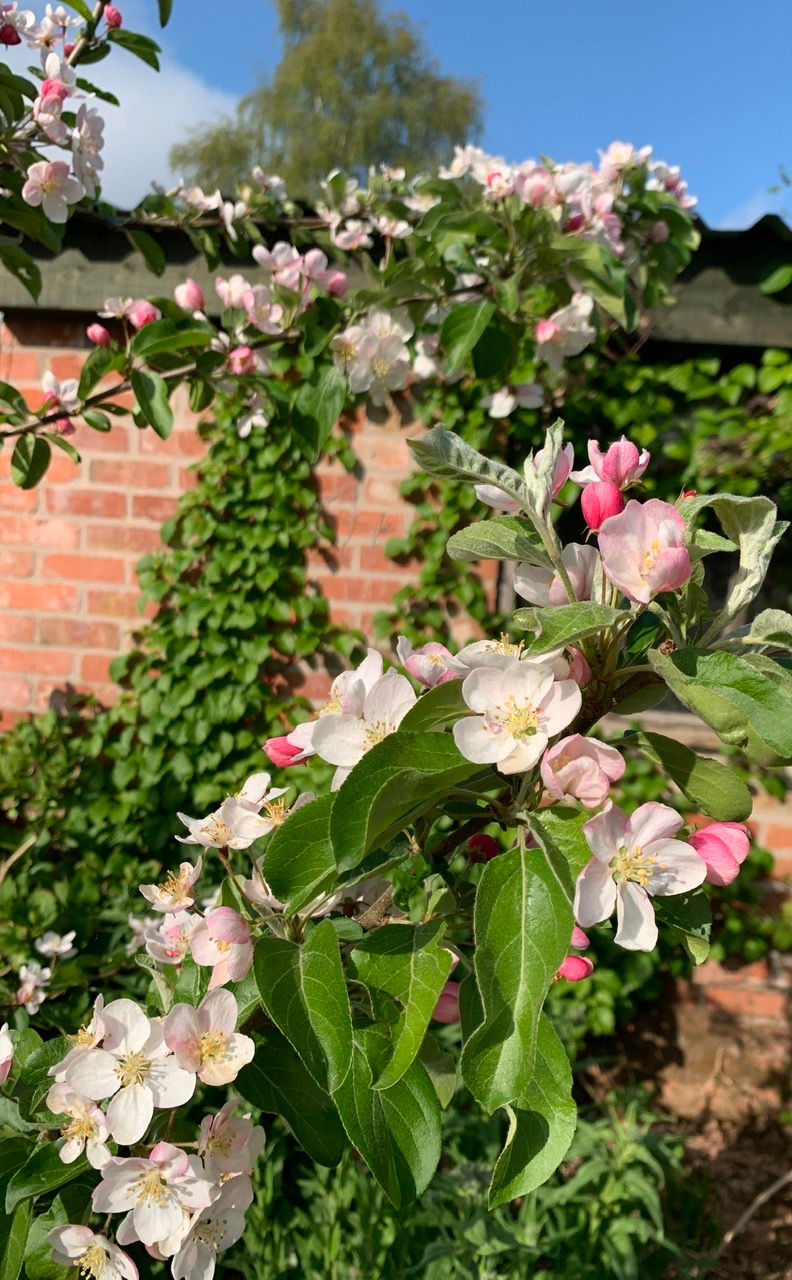Renewal
- Jane
- May 6, 2022
- 4 min read

We have just passed May day, Beltane in the mystic Celtic lore, the peak point of new life surging from the spring equinox to the summer solstice and beyond. Celebrated with fire in the western isles, in the English shires you are more likely to encounter a profoundly pagan yet sweetly pastel maypole, or perhaps a group of Morris dancers tinkling and bashing as they weave their ancient dances. In all but the coldest parts of the country, new green growth is sprouting, and the hedges and woods are rippling with white blossom. Apple and cherry are already out, but hawthorn is really only just showing around us now. This was the bloom prized above all by the old lore, and considered so powerful as to only be allowed into the house at this point of the year and no other. Stalwart of the countryside, this hardy species is invaluable now to us both as stout and spiky hedging and stand-alone trees, giving leaves, blossom and fruit to all who need food. We have little of it here, sadly, and aim to address that when we put in native hedging along our eastern boundary. I have also started finding tiny baby treelings in amongst the flower beds, self-seeded or delivered by birds, but it will be a while before these make hedge or tree height. Until then, I watch the few immature specimens in the southwest corner of our wood come into flower, while the chiff-chaffs vie to outsing each other above me.

Other treasures are popping up unexpectedly amidst the borders. 2020 was a mast year for oaks, meaning that the tree produces huge quantities of its particular fruit, in this case acorns. Mast years typically occur every 5-10 years, and are believed to be a survival strategy common in both oaks and beech. Production on such a high level is resource-intensive for the tree, but increases significantly its chances of successful germination. The tree is producing more food than local animals can possibly eat: by “flooding the market” new saplings have a better chance of establishing. Two years ago, we crunched over carpets of acorns; now as I part geranium leaves or prune a shrub, the familiar lobed leaves, tiny and shiny-new, show themselves, only 20-30cms tall now, but with all the potential to match their parent in stature - at least in a few hundred years. Much as I love them, it would be impractical to incorporate oaks into a border planting plan, so come the autumn I will transfer them to a nursery area where they can grow on.
This will require some heavy-duty predator-proofing: this spring has brought the seasonal visitations by both roe deer and muntjac. Two of Neil’s heritage apple trees have been comprehensively destroyed; our fault for not encircling them with proper fencing but given the thousands of acres of rich browsing Herefordshire farmland and woods adjoining us, still a little annoying.

Elsewhere, I continue to work on the west terrace herb beds. A warm April and - finally - a little rain has worked wonders here. A metre’s depth of gritty soil and a full south-west aspect is pretty much heaven for the woody and Mediterranean herbs. Oreganos, a couple of different thymes, rosemary, hyssop, wormwood, cardoons, wild rose, and salvias are edged with lavenders and boosted by the inevitable bronze fennel seedlings. In the smaller bed, which will soon be partly shaded by the lime tree’s huge canopy, are the softer “green” herbs: parsley, chives, garlic chives, coriander and dill. Height here will come - I hope - from an angelica, a member of the parsley family capable of reaching 5-6ft in height. This is a curious plant memory for me: I have no defined culinary need for this huge plant, but have very clear memories of my mum extolling the delights of preserved angelica, from the times when the plant’s stems would be treated the same way we now use candied citrus. I don’t imagine super-sweet green blobs would garner a rapturous reception from the family, but it is a beautiful plant in its own right, and flanked by the cream froth of sweet cicely flowers, it is more than deserving of its place.

Bay is here too, this herb unquestionably essential for me in cooking both savoury and sweet dishes, and established in large terracotta pots in case winter obliges us to move the pair of plants inside. They give a good frame to the west kitchen door, and seem happy - every stem is flush with new, pale green growth. Last to the party is the lemon verbena, two young plants transplanted from their temporary position last autumn, and - just as I had started thinking I had done for them both - now coming into leaf. This ups our fresh herbal tea range considerably - spearmint, pineapple mint, and chocolate mint are all delicious, but verbena (vervain) is a rare treat. If I can shepherd some of the chamomile self-seeders to this side of the house, that will be another one for the list. Working with herbs is one of the most soothing jobs in the garden; the scents are both delightful and healthgiving; you are working largely with green, so it helps to be more mindful of foliage shapes; and flowers, when they come, are usually magnets for a wide range of pollinators. Renewal in a patch of soil.



Kommentarer